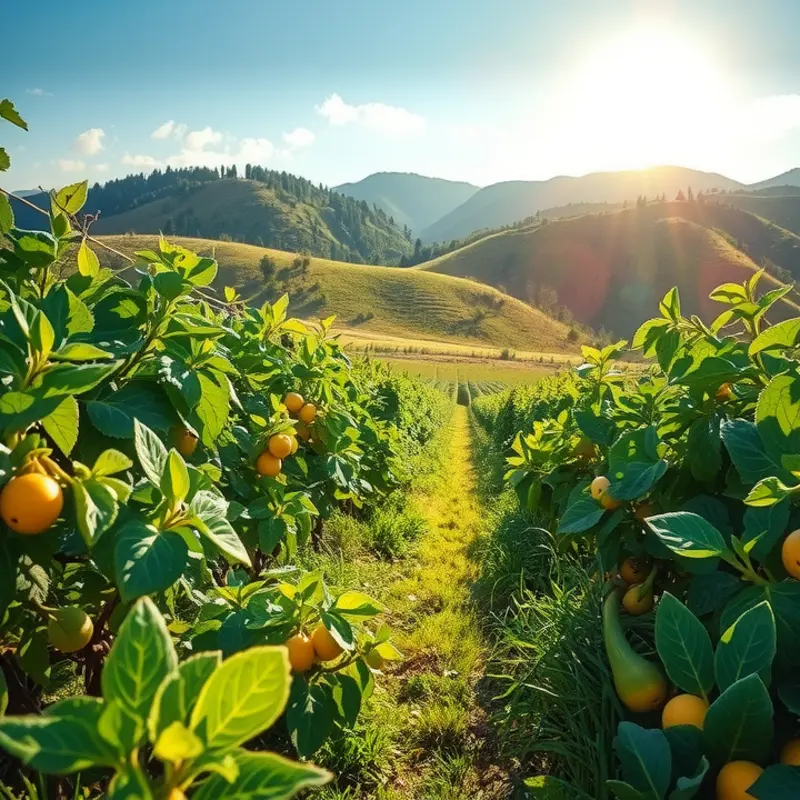Baking can be a source of joy and creativity, but it often comes with a substantial environmental impact. By adopting eco-responsible baking practices, you can enjoy your favorite treats while being kind to our planet. This guide explores practical strategies to make your baking more sustainable, from ingredient selection to energy-efficient techniques. Together, let’s make choices that benefit our health and our Earth.
Choosing Sustainable Ingredients

Selecting sustainable ingredients is the keystone to eco-responsible baking. Embracing local, organic, and seasonal products not only enhances flavor but also reduces the environmental impact of your baking pursuits. By prioritizing sustainability, your kitchen creations become a conduit for positive ecological change.
Choosing local ingredients is a simple yet impactful decision. When you buy local, you minimize the carbon footprint associated with transporting goods over long distances. Visit your local farmers’ market to find fresh produce and grains with a lower environmental impact. These choices help support your community and preserve local farmland.
Opt for organic ingredients whenever possible. Organic farming practices foster biodiversity and reduce harmful pesticide use. While some items might carry a heftier price tag, they often offer richer flavors and greater nutritional value. Organic flour, butter, and eggs transformed in your recipes can result in baked goods that are both delicious and environmentally sound.
Seasonal ingredients are another crucial component of sustainable baking. Aligning your baking with the natural harvest cycle minimizes the ecological costs of food preservation and transport. In the spring, berries are ideal partners for cakes and muffins, while autumn’s bounty of apples and pumpkins enhances your pastries. An attentive approach to seasons can refresh your repertoire and introduce intriguing new flavors.
Minimizing waste is another vital aspect of sustainable baking. Start by planning your recipes carefully to prevent surplus. Techniques like practical ingredient batching, as outlined in this guide, help streamline your process and reduce excess.
Store ingredients correctly to extend their shelf life, preventing spoilage. For example, keep flour in airtight containers and refrigerate nuts to maintain freshness. Incorporate any leftover ingredients into your next batch or different recipes, ensuring no ingredient goes unused.
When evaluating your ingredient choices, consider the packaging. Favor items in recyclable or minimal packaging. Bulk purchasing can also reduce waste significantly, provided you have the means to store these ingredients properly.
Lastly, consider transitioning towards plant-based substitutes. Reduce reliance on dairy and eggs by exploring alternatives like flaxseeds, aquafaba, or nut-based milk, which often have a smaller environmental footprint. By making thoughtful ingredient choices and staying informed about sustainable practices, your baking endeavors can truly embody eco-responsibility, delivering treats that honor both tradition and nature.
Energy-Conscious Baking Techniques

Optimizing energy consumption in your home kitchen is both practical and eco-friendly. Here’s how you can transform your baking routine to minimize your carbon footprint without compromising on taste.
Maximize Oven Use
Using your oven efficiently is a key component of energy-conscious baking. Avoid preheating the oven longer than necessary. Modern ovens reach desired temperatures faster, making extended preheating redundant. Use the oven light to check your bakes instead of opening the door, as opening can cause drastic temperature drops requiring more energy to rebound.
Batch Baking
One of the simplest ways to save energy is by baking multiple items simultaneously. When you plan meals or bake sellable goods, consider the collective time and energy. Baking items at similar temperatures ensures the oven operates optimally. This practice can also streamline your meal prep, reducing kitchen time significantly. For tips on efficient ingredient management, this guide on practical ingredient batching offers useful insights.
Use Residual Heat
After turning off the oven, keep your items inside to use residual heat. This can complete the baking process using existing energy rather than additional consumption. This method is especially beneficial for dishes that need a gentle finish, like soufflés or crusty bread.
Choose Convection Over Conventional
Convection ovens, with their circulating air, often cook faster and more evenly than standard models. Although they might consume slightly more energy per session, the reduced cooking time offsets this. If possible, adapt recipes for convection use and enjoy both quality and efficiency.
Small Appliances for Smaller Tasks
For tasks that don’t require a full oven, consider using smaller appliances. Toasters, air fryers, or microwave ovens often handle single portions or small bakes more efficiently. Experimenting with these devices can reveal surprising versatility in sustainable baking.
Insulated Cookware
Investing in insulated bakeware retains more heat, thus using less energy overall. These pans can limit the energy needed to maintain your dish’s temperature, harmonizing perfectly with a sustainable lifestyle.
Strategizing your baking approach not only empowers eco-responsibility but invigorates creativity and resourcefulness. As we refine these techniques, baking future delights without undue environmental impact becomes achievable.
Final words
Adopting eco-responsible baking practices allows you to indulge in delightful treats while taking care of our planet. By choosing sustainable ingredients and energy-efficient methods, you significantly reduce your environmental impact, making baking a genuinely guilt-free pleasure. Each small change contributes to a larger movement towards sustainability. Embrace this approach, share your journey with friends, and inspire others to join in on the wonderful world of eco-friendly baking. Together, we can create a delicious future that honors nature.








